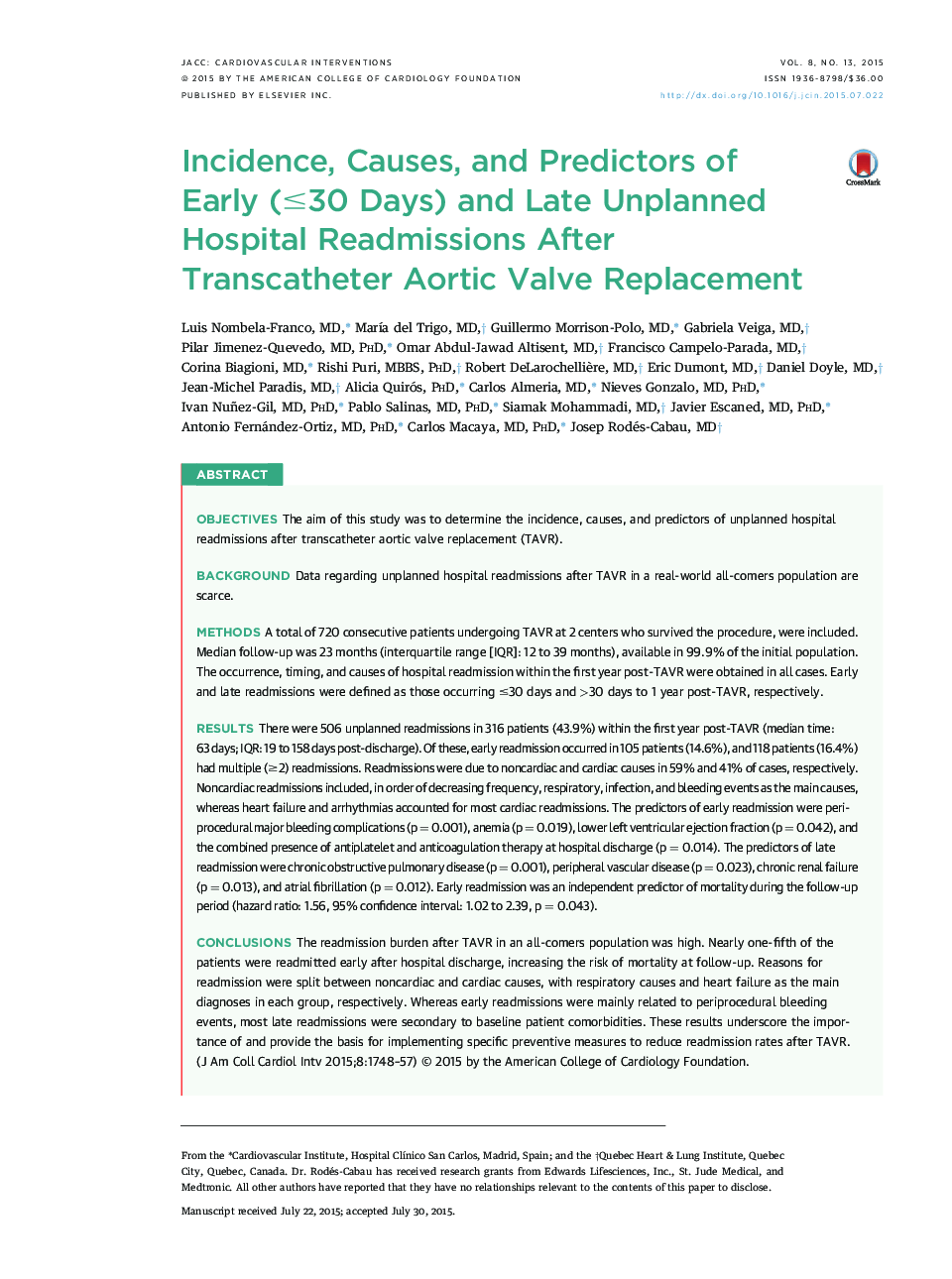| کد مقاله | کد نشریه | سال انتشار | مقاله انگلیسی | نسخه تمام متن |
|---|---|---|---|---|
| 2939821 | 1177004 | 2015 | 10 صفحه PDF | دانلود رایگان |

ObjectivesThe aim of this study was to determine the incidence, causes, and predictors of unplanned hospital readmissions after transcatheter aortic valve replacement (TAVR).BackgroundData regarding unplanned hospital readmissions after TAVR in a real-world all-comers population are scarce.MethodsA total of 720 consecutive patients undergoing TAVR at 2 centers who survived the procedure, were included. Median follow-up was 23 months (interquartile range [IQR]: 12 to 39 months), available in 99.9% of the initial population. The occurrence, timing, and causes of hospital readmission within the first year post-TAVR were obtained in all cases. Early and late readmissions were defined as those occurring ≤30 days and >30 days to 1 year post-TAVR, respectively.ResultsThere were 506 unplanned readmissions in 316 patients (43.9%) within the first year post-TAVR (median time: 63 days; IQR: 19 to 158 days post-discharge). Of these, early readmission occurred in 105 patients (14.6%), and 118 patients (16.4%) had multiple (≥2) readmissions. Readmissions were due to noncardiac and cardiac causes in 59% and 41% of cases, respectively. Noncardiac readmissions included, in order of decreasing frequency, respiratory, infection, and bleeding events as the main causes, whereas heart failure and arrhythmias accounted for most cardiac readmissions. The predictors of early readmission were periprocedural major bleeding complications (p = 0.001), anemia (p = 0.019), lower left ventricular ejection fraction (p = 0.042), and the combined presence of antiplatelet and anticoagulation therapy at hospital discharge (p = 0.014). The predictors of late readmission were chronic obstructive pulmonary disease (p = 0.001), peripheral vascular disease (p = 0.023), chronic renal failure (p = 0.013), and atrial fibrillation (p = 0.012). Early readmission was an independent predictor of mortality during the follow-up period (hazard ratio: 1.56, 95% confidence interval: 1.02 to 2.39, p = 0.043).ConclusionsThe readmission burden after TAVR in an all-comers population was high. Nearly one-fifth of the patients were readmitted early after hospital discharge, increasing the risk of mortality at follow-up. Reasons for readmission were split between noncardiac and cardiac causes, with respiratory causes and heart failure as the main diagnoses in each group, respectively. Whereas early readmissions were mainly related to periprocedural bleeding events, most late readmissions were secondary to baseline patient comorbidities. These results underscore the importance of and provide the basis for implementing specific preventive measures to reduce readmission rates after TAVR.
Journal: JACC: Cardiovascular Interventions - Volume 8, Issue 13, November 2015, Pages 1748–1757